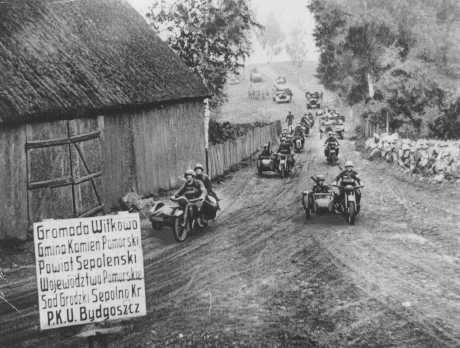
Timeline of Events Leading to World War Two
Timeline of Events Leading to World War Two
Below is a timeline showing the major events from the end of World War One to the Bombing of Pearl Harbor, with emphasis on political events and the start of major wars and crises. NOTE: With this graphical Timeline, you can grab it with your mouse pointer and “grab” it to move the centerpoint so you can view the whole timeline.
|
World War Two-Related Event |
Description of the World War Two-Related Event |
| World War One Armistice (Nov. 11, 1918) | This is the date when the war on the Western Front ended, and Germany accepted the Armistice (or cease-fire), effectively ending World War One. |
| Treaty of Versailles Signed (June 28, 1919) | The treaty ending World War One put the guilt of the war on Germany, and inflicted massive economic, military, geographic, and emotional damage on Germany that would be exploited by Hitler to convince the German people to follow him. |
| Mussolini Becomes Leader of Italy (1922) | The King of Italy, fearing the power of Benito Mussolini’s Fascist Party, hands over power to the Mussolini. |
| Japan Invades Manchuria (1931) | Japan, who already has an army stationed in Manchuria as a result of prior wars and treaties, seizes contol of this northern Chinese region. Local resistance to the Japanese Occupation begins and continues through the end of World War Two. |
| Shanghai War of 1932 | Chinese protests and boycotts against Japan, due to the Invasion of Manchuria, leads to violence in the Chinese city of Shanghai. Japanese troops stationed there (again due to prior wars and treaties), occupy parts of Shanghai as the Japanese Navy launches airstrikes at the city. The Chinese 19th Route Army holds firm in this three-month battle, and fights the Japanese to a standstill. A cease-fire in March, 1932 halts the fighting. |
| Hitler Takes Power in Germany (1933) | Hitler is named Chancellor of Germany. He then suspends the constitution and rules as dictator. |
| Italian invasion of Ethiopia (1935-1936) | Mussolini attacks the oldest independent African nation and adds it to his colonies. |
| German Re-Occupation of the Rhineland (1936) | While technically a part of Germany, the Rhineland region was to be unmilitarized by the Germans per the Treaty of Versailles. Hitler’s re-occupation of the Rhineland proved to him that the wartime Allies would not stand up to him. |
| Spanish Civil War (1936-1939 | Fascist Spanish forces led by General Francisco Franco launch a civil war to overthrow the leftist Republican government. Franco receives military aid from Italy (troops), and Germany (the German Air Force) and the Republican side receives large amounts of aid from the Soviet Union. |
| 2nd Sino-Japanese War (arguably the start of WW2 in Asia) (1937-1945) | Beginning with an incident at the Marco Polo Bridge in Peking (now Beiing), Japan launched a full-scale invasion of China. |
| German Annexation of Austria (The Anschluss) (1938) | Hitler again violates the Treaty of Versailles by annexing a more-or-less willing Austria, the German-speaking nation that was Hitler’s birthplace. |
| Munich Agreement (1938) | Hitler bullies the British and French into allowing him to annex a part of Czechoslovakia known as the Sudetenland. |
| German Occupation of Czechoslovakia (1939) | Violating the Munich Agreement, Germany (with help from Hungary), occupies the remainder of Czechoslovakia. |
| Italian Invasion of Albania (1939) | Mussolini continues to expand his new “Roman Empire.” |
| German Invasion of Poland (start of WW2 In Europe) (1939) | The European part of World War Two starts with this event. On September 3, 1939, Britain, France, Canada, and other Commonwealth nations declare war on Germany. |
| German Invasion of the Soviet Union (1941) | Hitler violates his earlier agreement with Stalin (Imagine that!) and invades the Soviet Union, with aid from Italy, Hungary, and Romania. |
| Japanese Attack Pearl Harbor (plus British, French, American, and Dutch colonies and territories) (1941) | Japan attacks American forces at Pearl Harbor, the Philippines, Wake Island; British forces in Hong Kong, Malaya; French forces in Indochina; and Dutch forces in the Dutch East Indies, or what is now Indonesia. |

